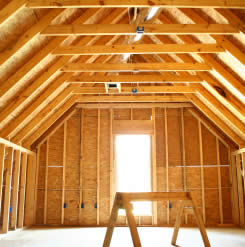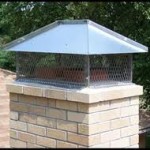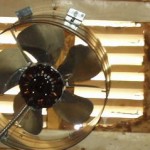 Attics and Chimneys
Attics and Chimneys
Some of the most significant roofing damage that occurs is the result of problems with attics and chimneys. We’ll take a look at chimneys and attics in this roofing guide and discuss how you can prevent them from causing problems for your roof.
Chimneys
The problem with chimneys is that the roof decking and roofing material must be butted up to the chimney and a water-tight fit ensured with the use of flashing. If their are any gaps in the seam, water will find its way between the roofing and the chimney, and into your home.
The challenge is greatest on homes where the chimney protrudes through the roof and has 4 sides that must be properly sealed. The problem is that chimneys settle and move, along with the rest of the house, possibly creating gaps between the chimney and the flashing where water can get through. Issues with flashing are one of the single greatest causes of leaks in homes.
The key is to inspect the flashing on a regular basis, at least twice a year. Look for flashing that is out of place, and check for gaps between the flashing and the chimney. Repair these issues immediately with new flashing, not with tar, roofing cement or caulk. If you have a leak in your home, an inspection of the flashing is the first place to begin.
Attics
There are two major problems that develop with attics. Let’s take a look at them and discuss how to fix the problems.
Excess Heat: In warm weather, heat can build up in an attic causing damage to the underlay or asphalt shingles. When you see cupped shingles, it is often the result of an attic that overheats in warm, sunny weather. That excess heat also pushes down into your home, making it hotter, or harder to cool with air conditioning.
The key to getting rid of excess heat is improved ventilation. This can be achieved in a number of ways including vented soffits, ridge vents and gable vents. Those are passive openings where heat can escape and they do help. However, an active means of reducing heat is preferred. Options include gable or roof fans that pull heat out of the attic while pulling in cooler air through ridge, soffit or gable vents. Solar fans are available that require no wiring or energy use. If condensation is a problem in the winter, attic fans will help clear it. If condensation is not a problem, the attic fan can be turned off in winter.
The second problem is excess moisture in the attic in the winter. The roof decking and trusses get cold and moisture in the attic condenses on them. In time, this will rot the wood, leading to serious structural damage and expensive repairs. Condensation on attic insulation can also reduce its effectiveness, causing your energy bills to rise.
Most moisture gets into the attic from inside the living space of your home. There are several ways to prevent this. Always make sure your clothes dryer vents to the outside. Secondly, install exhaust fans in bathrooms and run them during showers. Next, if you use a humidifier, don’t overdo it. Finally, if you have a wood stove or fireplace, don’t store more than 2-4 days worth of wood indoors. Though it appears dry, it can hold quite a bit of moisture that may escape once it is indoors.
Make sure the attic has proper ventilation so that moisture can escape rather than being trapped where it will absorb into wood, causing damage.
Once you’ve cut down on the excess moisture in your living space, it might be wise to add a layer of quality insulation in the attic, to further isolate the environment there. If too much heat from your living space gets into the attic, it will melt snow on the roof, causing it to run down to the eave, or overhang of your roof, where it will freeze, causing an ice dam and forcing water up, under shingles where it can damage the roof or leak into your home.
Finally, Chimneys and Attics are among the leading causes of roofing damage. Checking and repairing the flashing around your chimney and controlling the environment in your attic are 2 affordable ways to protect your home and prevent some very costly repairs from being needed.
Attics and Chimneys Articles and Guides

Having a Chimney Cap Installed to Keep Birds out of the Fireplace
Chimneys can become a nesting spot for birds, raccoons, squirrels and other animals. Not knowing they are there or have built a nest there can lead to... more

Can An Attic Vent Fan Extend the Life of a Roof?
Many homeowners have heard discouraging news from roofing contractors telling them their roof is ruined years before it should need to be replaced. The... more
